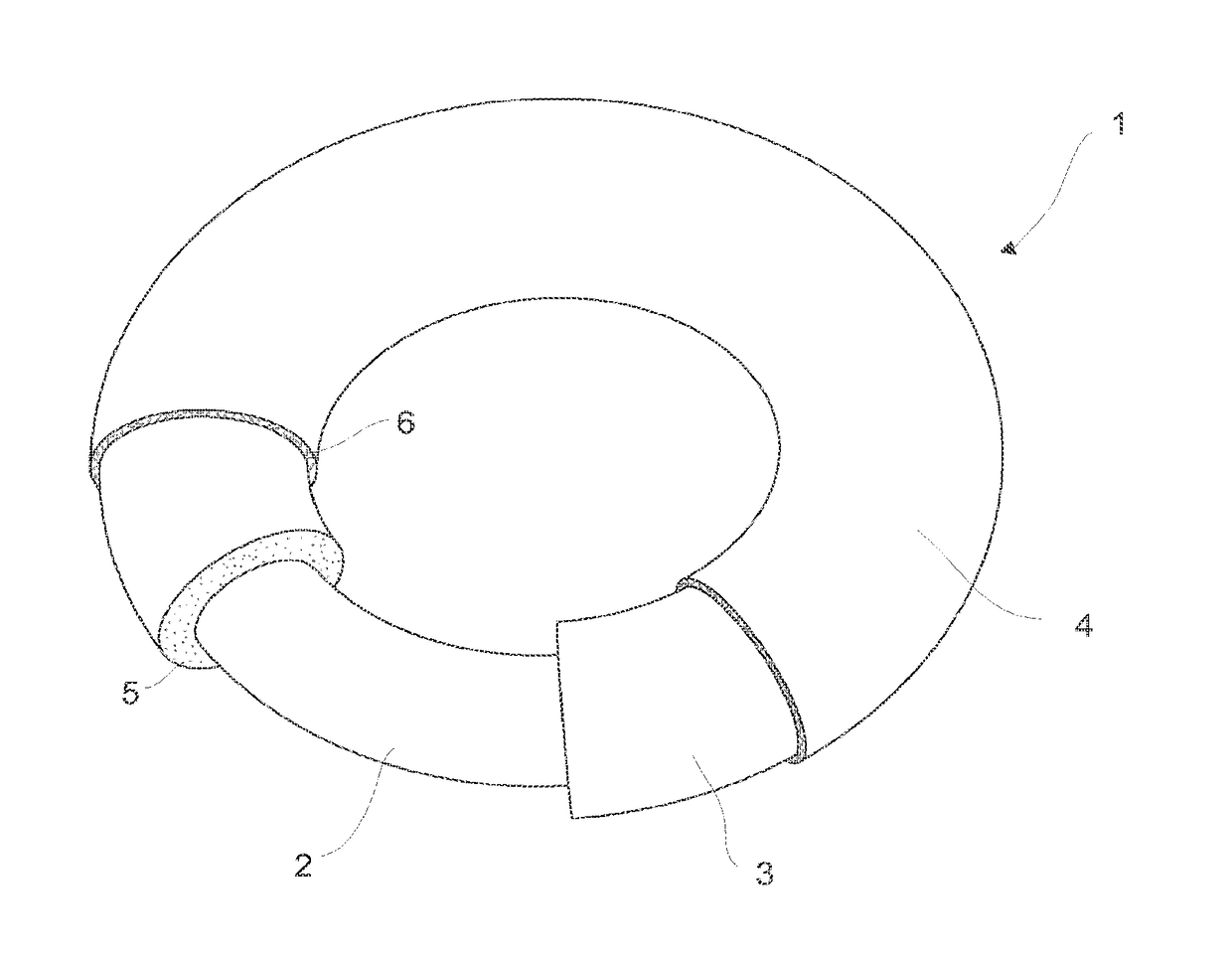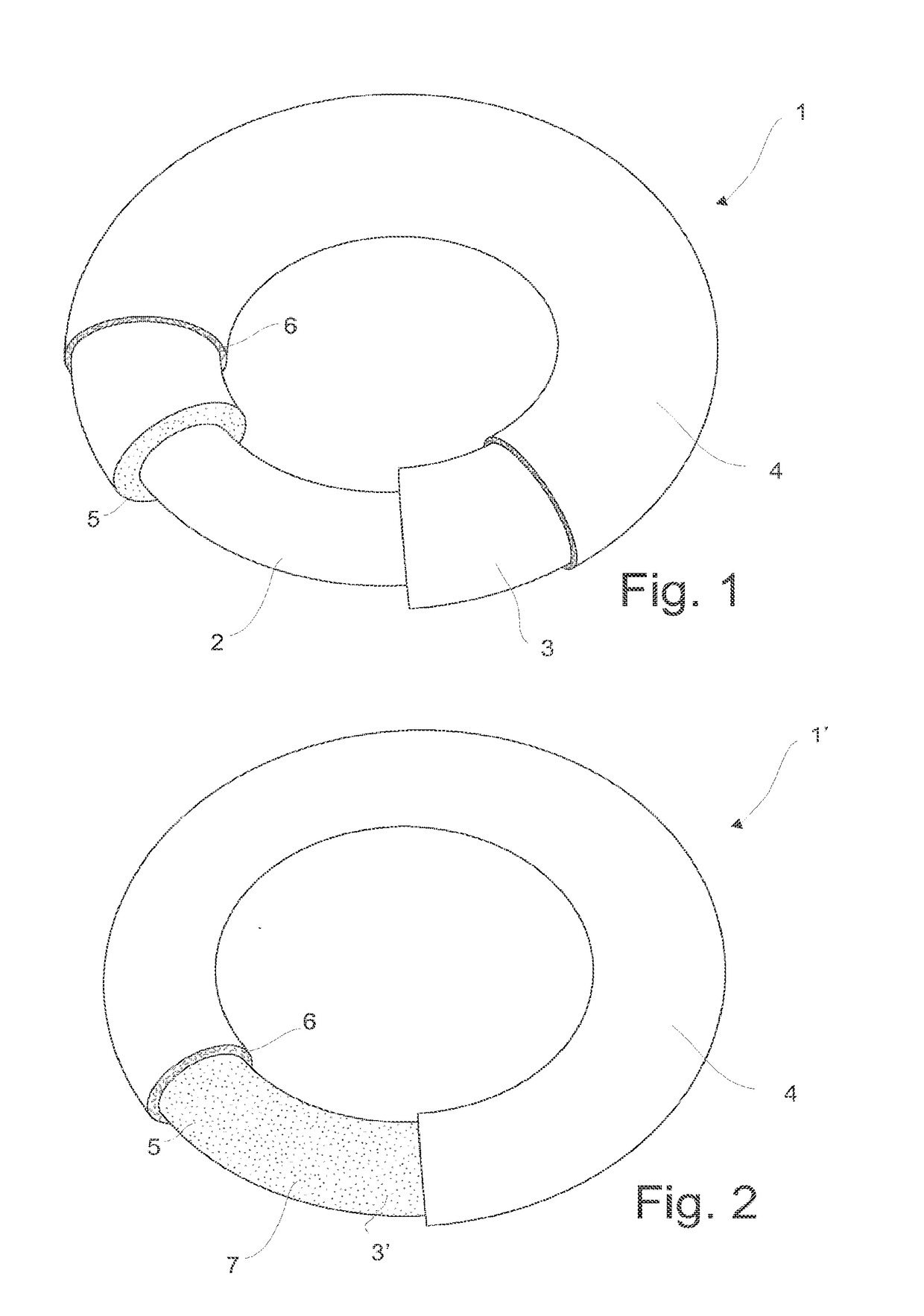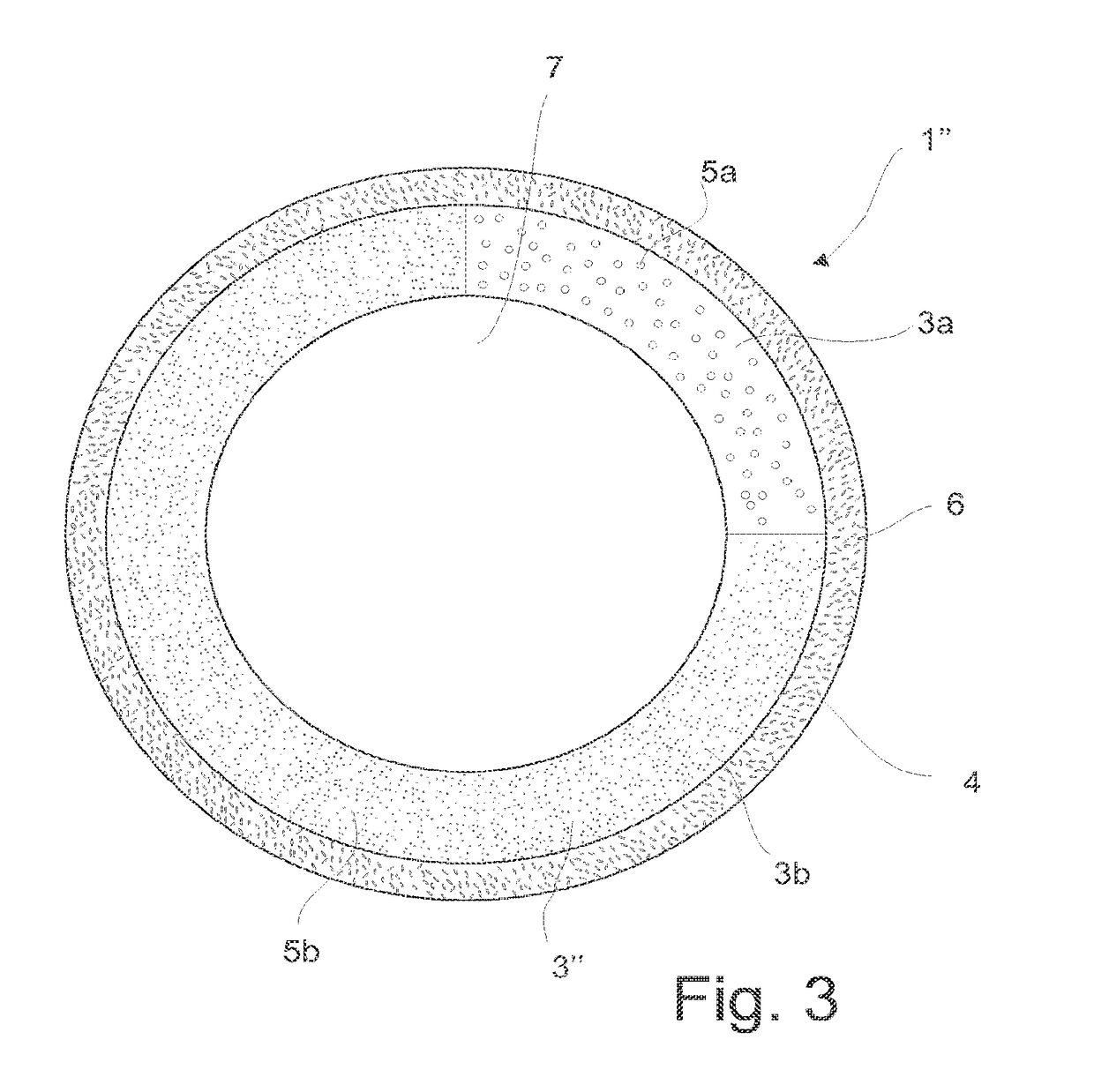Intrauterine device, and a method of reducing the rate of diffusion of active ingredients in said intrauterine device
a technology of intrauterine device and active ingredient, which is applied in the direction of contraceptive device, drug composition, inorganic non-active ingredients, etc., can solve the problems of gradient across the membrane, decay of release rate, complex diffusion of polymer, etc., and achieve different diffusion characteristics
- Summary
- Abstract
- Description
- Claims
- Application Information
AI Technical Summary
Benefits of technology
Problems solved by technology
Method used
Image
Examples
example 1
[0081]In the present experiment the first layer was made of polydimethylsiloxane (obtainable from NuSil Technology LLC) with varying amounts of talc (obtainable from Imerys Talc) as particulate material. The used talc had a mean particle size of 19.3 μm determined by laser diffraction. The second layer was made of polydimethylsiloxane (obtainable from NuSil Technology LLC) having a concentration of 0.1 w / w % estradiol (obtainable from Sigma-Aldrich Co. LLC).
[0082]The first layer was cured at 130° C. The second layer containing the estradiol was cured at room temperature.
[0083]Five different samples were manufactured, two of which contained no particulate material, and three having increasing amounts of particulate material in the first layer.
[0084]The samples were analysed for in-vitro drug release using the dissolutions test described above, and the results are shown in table 1.
TABLE 1in-vitro release of estradiol from the five samples.Thickness of firstAmount of talcAmount of talc...
example 2
[0086]In order to further investigate the impact of the concentration of the particulate material in relation to the thickness of the first layer, a number of additional samples were constructed using the method described above.
[0087]In the present experiment the first layer (membrane) was made of polydimethylsiloxane with different amounts of talc (obtainable from Imerys Talc) having varying mean particle sizes. The mean particle sizes determined by laser diffraction of the talc used, are as follows: pharma grade: 19.3 μm, M grade: 10.5 μm and UM grade: 3.6 μm.
[0088]The second layer (core) was made of polydimethylsiloxane. Said core had nine parts by weight of polydimethylsiloxane and one part by weight of ethinyl estradiol (obtainable from Bayer Pharma AG). (i.e. the core contains 10 w / w % ethinyl estradiol).
[0089]The polydimethylsiloxanes were cured at 70° C. for 15 minutes.
[0090]The used polydiinethylsiloxanes (both core and membrane) are a MEDS-6381 silicone, obtainable from Nu...
example 3
[0105]Six additional samples were made, using the method described above, to further demonstrate the impact of the size of the particulate material added to the first layer (membrane), in the form of talc (particle size above 0.1 μm) and / or fumed silica (particle size below 0.1 μm).
[0106]The samples each contain a second layer in the form of a core. Said core contains three parts by weight of MED-4286 silicone and one part by weight of drospirenone (obtainable from Sterling S.p.A.) (i.e. the core contains 25 w / w % drospirenone). Said silicone does not comprise fumed silica.
[0107]The samples each comprises a first layer made of different silicones. In all samples the first layer had a thickness of 0.5 mm and had different amounts of talc (obtainable from Imerys Talc) and / or different amounts of fumed silica (silica). The mean particle sizes of the talc used, as determined by laser diffraction, were: Pharma grades: 19.3 μm; M grade: 10.5 μm and UM grade: 3.6 μm. The fumed silica had a...
PUM
| Property | Measurement | Unit |
|---|---|---|
| Fraction | aaaaa | aaaaa |
| Fraction | aaaaa | aaaaa |
| Time | aaaaa | aaaaa |
Abstract
Description
Claims
Application Information
 Login to View More
Login to View More - R&D
- Intellectual Property
- Life Sciences
- Materials
- Tech Scout
- Unparalleled Data Quality
- Higher Quality Content
- 60% Fewer Hallucinations
Browse by: Latest US Patents, China's latest patents, Technical Efficacy Thesaurus, Application Domain, Technology Topic, Popular Technical Reports.
© 2025 PatSnap. All rights reserved.Legal|Privacy policy|Modern Slavery Act Transparency Statement|Sitemap|About US| Contact US: help@patsnap.com



